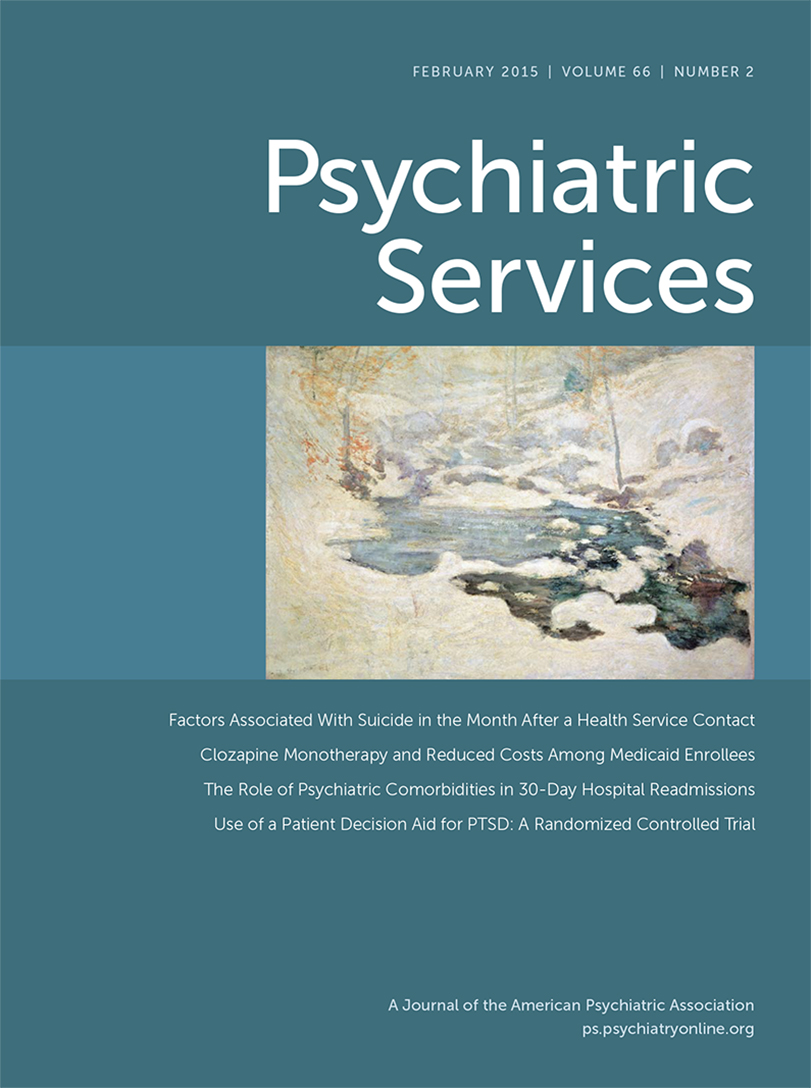This Month’s Highlights
Suicide and Final Service Contacts
Suicide prevention is a national and international priority. One approach to preventing suicide is to identify factors that may delay the act of suicide—a delay of sufficient length would allow time for an intervention. With this in mind, Helen-Maria Vasiliadis, M.Sc., Ph.D., and her colleagues in Quebec examined patterns of health service use in the year before death in a sample of nearly 9,000 people who died by suicide. The authors compared clinical and sociodemographic factors for two groups: those who died within one month of a final health service contact and those whose death occurred more than a month after the final contact. Not surprisingly, they found that most people in the sample had used a service in the year before death. Among suicide decedents whose last contact was an inpatient hospitalization, three-quarters died in the month after discharge. The most consistent modifiable factor associated with death in the month after a final contact was the number of outpatient consultations after discharge from a hospital or emergency department, underlining the importance of follow-up efforts (page Original article: 121). In a Taking Issue commentary, Ashok Malla, M.B.B.S., F.R.C.P.C., teases out subtle implications of these findings. He also reminds health care providers of their limitations, noting that about one in five people in the Quebec sample had no service contacts in the year before death and that no provider would have had the opportunity to intervene (page Original article: 109).
Cost Reductions With Clozapine
Many clinicians are reluctant to prescribe clozapine, because of its association with agranulocytosis and the need for ongoing blood level monitoring. When treating patients with antipsychotics, many prefer augmentation and switching approaches, which may lead to antipsychotic polypharmacy, which is generally discouraged by practice guidelines and consensus statements. Dawn I. Velligan, Ph.D., and colleagues compared data for two subgroups in a sample of nearly 3,000 nonelderly Medicaid beneficiaries with treatment-resistant schizophrenia: those treated with clozapine monotherapy and those treated with second-generation antipsychotic polypharmacy that did not include clozapine. In the year after treatment initiation, the clozapine monotherapy group was significantly less likely to visit the emergency department for psychiatric treatment, and total Medicaid payments for this group were 40% to 50% lower than for the polypharmacy group (page Original article: 127).
Psychiatric Comorbidities and Hospital Readmissions
Hospital readmissions account for a large proportion of U.S. health care spending. A new policy implemented by the Centers for Medicare and Medicaid Services penalizes hospitals with excessive readmissions for any reason within 30 days of discharge from an index admission for heart failure, acute myocardial infarction, and pneumonia. Brian K. Ahmedani, Ph.D., L.M.S.W., and colleagues investigated the role of various psychiatric comorbidities in 30-day readmission rates for these three conditions. Analyzing 2009–2011 data from 11 U.S. HMOs for more than 160,000 hospitalizations, they found that 22% of patients with a psychiatric comorbidity were readmitted within 30 days. The rate was significantly lower (17%) among those without a psychiatric comorbidity. Interventions to reduce readmissions after medical-surgical hospitalizations should include mental health components, the authors note (page Original article: 134).
A Patient Decision Aid for PTSD
Some research has suggested that treatment for posttraumatic stress disorder (PTSD) is not consistently patient centered, which may contribute to nonadherence to therapy. One strategy to increase patient centeredness is use of patient decision aids. These tools, which include Web sites, interactive videos, audiotapes, and booklets, help prepare patients to make thoughtful choices among treatment options, augmenting input from their clinicians. In a randomized controlled trial that involved 132 veterans with a new diagnosis of PTSD, Bradley V. Watts, M.D., M.P.H., and researchers from the Department of Veterans Affairs tested such a tool—a 26-page, richly illustrated booklet that describes PTSD and effective treatments. Veterans who read the booklet for about 15 minutes before a standard initial mental health evaluation were more willing than those who were not given the decision aid to express a treatment preference and more likely to select and receive an evidence-based treatment (page Original article: 149).
Briefly Noted
| • | The Research & Services Partnerships column describes how a unique partnership between a behavioral health provider, a nonprofit oversight agency, and academic researchers used Design for Six Sigma to redesign the provider’s intake process (page Original article: 112). | ||||
| • | A pilot evaluation showed promising outcomes among individuals with serious mental illnesses who participated in a multicomponent weight loss program at a CMHC (page Original article: 200). | ||||
| • | A best-worst scaling instrument helped researchers better understand parents’ most important concerns as they weighed whether to use medication for children with ADHD (page Original article: 208). | ||||



